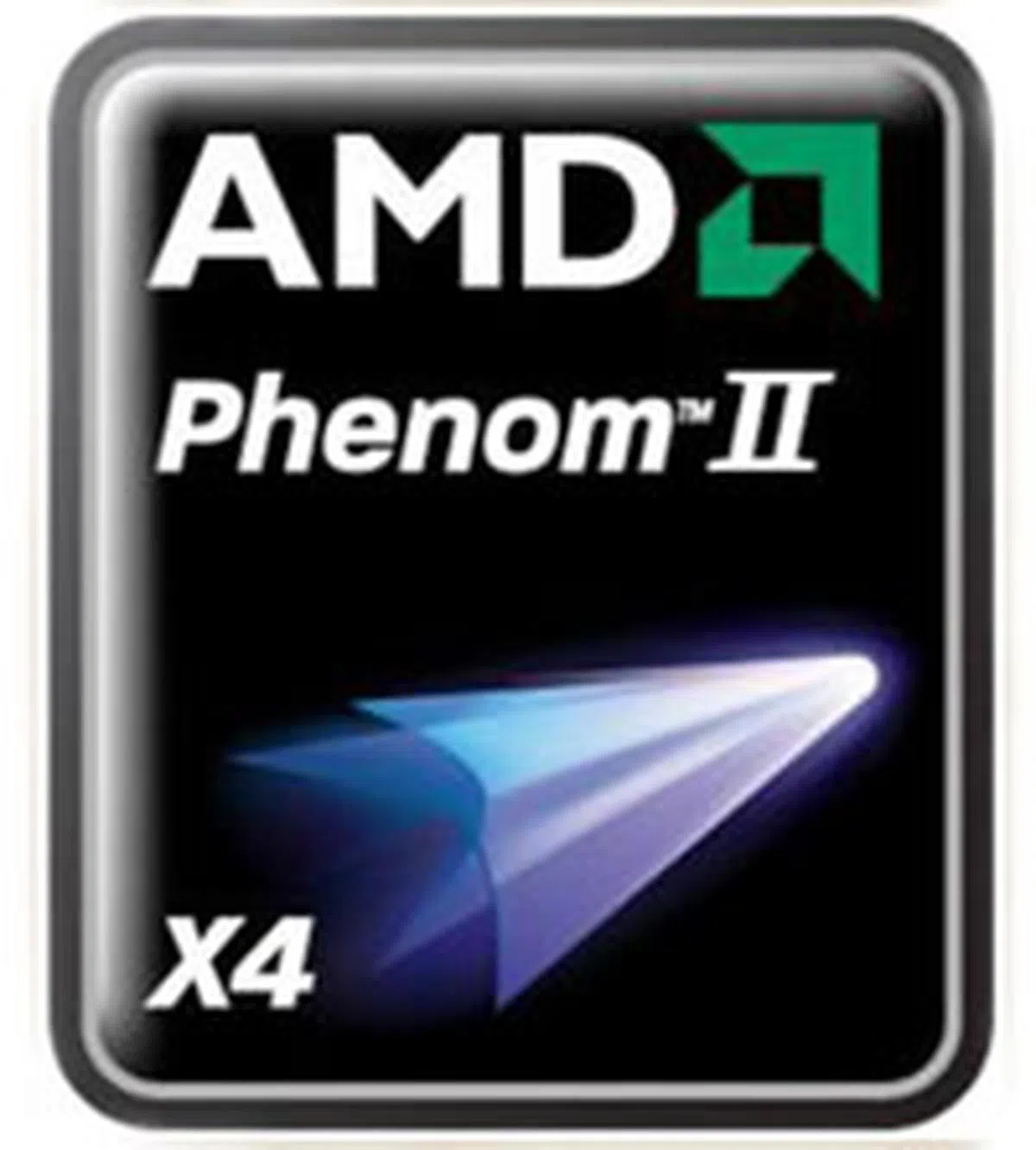AMD's January Update - Phenom II X4 975 'Black Edition' & Phenom II X4 840
With all the Sandy Bridge headlines this month, AMD's introduction of two new Phenom II processors is likely to go unnoticed. Are these two processors worth taking a closer look? We check out the Phenom II X4 975 'Black Edition' and the Phenom II X4 840.
Two for the New Year
Blink and you would have missed it: AMD's announcement of two new quad-core processor models was made shortly after Intel's went live. Going by their original NDAs, it was supposed to be the other way round. AMD had scheduled its processor release a day before Intel's Sandy Bridge, but Intel changed its date rather at the last minute, which took us too by surprise.
Besides the fact that we ended up late with our Sandy Bridge article, the change in NDA also meant that AMD's new processors were inevitably lost amid the flood of Sandy Bridge reviews. Unsurprisingly too, since the first two AMD CPUs of the year are once again incremental additions to its existing lineup. Even AMD is focusing on its Fusion products, which were revealed at CES 2011, making these new desktop processors seem like an afterthought.
Nevertheless, we're here to bring you the latest tech developments and despite the presence of Sandy Bridge, there's still room for a budget AMD processor (the new Phenom II X4 840) and its fastest 'Black Edition' quad-core (the new Phenom II X4 975 BE). Right?
Here are the basic specs for the two:
Processor Model | Clock Speed | L2 Cache | L3 Cache | HyperTransport Bus | Max TDP (W) | Retail Price (US$) | Availability |
AMD Phenom II X4 975 Black Edition | 3.6GHz | 512KB x 4 | 6MB | 2.0GHz | 125W | ~195 | Now |
AMD Phenom II X4 840 | 3.2GHz | 512KBx 4 | N.A | 2.0GHz | 95W | ~102 | Now |
The AMD Phenom II X4 975 Black Edition is the predictable member of the two. AMD has been gradually increasing the clock speed of its highest-end processors and at 3.6GHz, the Phenom II X4 975 BE is the fastest quad-core in its stable. Its predecessor, the Phenom II X4 970 (3.5GHz) was only introduced in September last year, and well, AMD thinks it's time for another minor upgrade. At US$195, it's slightly more expensive than the 970, which is going for US$186 nowadays.

The Phenom II X4 975 BE is clocked at 3.6GHz, but drops to 800MHz during idle.
The other Phenom II X4, the 840 is meant for the budget segment despite its 'Phenom II' branding. It's also a return to the 800 series that has been rather quiet for a while now. However, there's an important difference. The 840 has more in common with the Athlon II X4 family, what with its lack of L3 cache. A look at the processor codename - Propus - gives away the clue that it is indeed the same core as the Athlon II X4.
It would seem like a bad move to dilute the Phenom II brand with a much weaker processor, but AMD appears to have the 840 assigned to the value bin, with an affordable US$102 price tag that actually undercuts the US$119 Athlon II X4 645. Perhaps a price adjustment for the Athlon II X4 will be coming soon.
Anyway, there's nothing new to talk about these processors that you haven't heard before, so let's go straight to the testing and results.
Test Setup
Intel's Sandy Bridge processors are making the headlines for the right reasons, so any processor launch by AMD will face the full competitive wrath of Chipzilla. While the Phenom II X4 840 largely escapes the Sandy Bridge onslaught due to its US$102 price tag (the cheapest Sandy Bridge processor, the dual-core Core i3-2100 is US$117), the US$195 AMD Phenom II X4 975 Black Edition will face the Core i5-2400 (US$184). The prices for the Intel processors are for bulk purchases, so the actual retail prices, especially if there's high demand, are likely to be a tad higher than the ones quoted here.
For the comparison, we added the Phenom II X6 1075T (US$199), the Phenom II X4 970 (US$186) and for the lower end, the Athlon II X4 645, 635 and the US$125 Core i3-550. These processors will cover the US$100 to 200 range and are the relative competitors for the two new AMD CPUs.
The test configurations used are listed below:
AMD Phenom II X4/X6 Test Configuration
- ASUS Crosshair IV Formula (AMD 890FX + SB850, 0702 BIOS)
- 2 x 1GB Kingston HyperX DDR3-1333 (7-7-7-20)
- Zotac GeForce GTX 260 OC (ForceWare 197.45)
- AMD Chipset driver
- Western Digital Caviar Black 1TB SATA 6Gbps (one single NTFS partition)
- Microsoft Windows 7 Ultimate (64-bit)
Intel P67 Test Configuration
- ASUS P8P67 Deluxe (BIOS: 0602)
- 2 x 1GB Kingston HyperX DDR3-1333 (CAS 7-7-7-20)
- Zotac GeForce GTX 260 OC (ForceWare 197.45)
- WD Caviar Black 1TB, SATA 6G (Intel 6G)
- Windows 7 Ultimate (64-bit)
- Intel INF 9.2.0.1015
Intel Core i5/i3 Test Configuration
- Intel Core i3-530
- MSI P55-GD85 (BIOS 1.37)
- 2 x 1GB Kingston HyperX DDR3-1333 (CAS 7-7-7-20)
- Zotac GeForce GTX 260 OC (ForceWare 197.45)
- Western Digital Caviar Black 1TB SATA 6G (Marvell 6G)
- Intel INF 9.2.0.1015
- Microsoft Windows 7 Ultimate (64-bit)
Benchmarks
The following benchmarks were used in this review:
- BAPCo SYSmark 2007 Preview (ver 1.05)
- Futuremark PCMark Vantage (ver 1.03.1, 64-bit)
- Lightwave 3D 9.0 (64-bit)
- 3ds Max 8 (SP2)
- Cinebench 11.5 (64-bit)
- Handbrake 0.9.4
- Futuremark 3DMark Vantage (ver 1.03.1)
- Far Cry 2
- Battlefield Bad Company 2
Results - SYSmark 2007 Preview
As expected, the Phenom II X4 975 'Black Edition' was not much faster than the previous AMD quad-core champion, the X4 970. 100MHz is barely worthy of an overclock and you can reproduce the X4 975 with ease using the 970. The 840 meanwhile was almost level with the Athlon II X4 645, but considering that the 840 is less expensive than the 645 now, we believe that consumers would go with the 'premium' Phenom II brand. Intel's processors in their respective price segments however are the processors to get, at least in SYSmark 2007.


Results - Futuremark PCMark Vantage
Most of the processors were in the same ballpark region when it came to the overall score, with the Core i5-2400 blowing away the competition, including the 6-core Phenom II X6 1075T. A look at the breakdown showed that the 975 was again difficult to distinguish from the 970 and the 1075T. The 840 too was performing like the Athlon II X4 that it is, except for its higher 3.2GHz clock. Just going by SYSmark and PCMark scores, it's pretty hard to recommend an AMD processor.



Results - Lightwave 3D 9.0
Lightwave 3D, which was able to make better use of the number of processor cores on a CPU, had the 975 leading the AMD contingent by the slimmest of margins. The 840 was also slightly ahead of the other Athlon II X4s, no doubt due to its 100MHz advantage. Unfortunately, the Core i5-2400 was clearly superior to any of AMD's offerings and the Core i3-550 was pretty competitive until the 8-thread workload revealed its shortcomings.


Results - Cinebench 11.5 & Handbrake 0.9.4
Cinebench is the best endorsement of a CPU with more processor cores and it helps the Phenom II X6 1075T edge ahead of the Core i5-2400. It's also the reason why the dual-core Core i3-550 ends up bottom of the pack. In all fairness, we believe that one should get at least a quad-core nowadays, unless your budget really prevents that. Handbrake had rather similar results, though the Core i5-2400 still managed to beat the Phenom II X4 975 BE.


Results - 3ds Max 8 (SP2)
Any hopes that AMD's revival in multi-threaded applications were dashed in 3ds Max 8, where the Core i5-2400 was the superior option. The Phenom II X4 975 barely managed to beat the 970, though the 6-core 1075T was still beyond it. The Phenom II X4 840 was as usual performing like an Athlon II X4, with its clock speed its main saving grace.


Results - Futuremark 3DMark Vantage
The CPU portion of 3DMark Vantage confirmed what we had seen so far - the 975 is a slight bump over the 970, and so is the 840 over the Athlon II X4 645. Neither looked very convincing once we threw Intel into the equation, especially the 975, which faces the less expensive yet more powerful Core i5-2400. The 840 at least had the luxury of facing an Intel dual-core.


Results - Far Cry 2 & Battlefield Bad Company 2
Gaming benchmarks are usually affected by the graphics card, though there are times when the CPU microarchitecture has an impact. The Core i5-2400 was again the top performer in Far Cry 2 and neck to neck with the Phenom II X6. The 975 however had similar scores as the 970 and ditto for the 840. In short, these two newcomers are unlikely to keep up with their Intel competitors.


Power Consumption
Given what we have seen of their performance, the power draw figures for the two new Phenom II X4 CPUs were not surprising. For the 975, it was marginally higher than the 970, and for the 840, it was similar to the Athlon II X4 645, and in fact was slightly lower in some cases. Since they are both incremental upgrades over the existing lineup, it's more or less what we expected.



Overclocking
With its 'Black Edition' mantle, the Phenom II X4 975 had a reputation to maintain when it came to the overclocking department. From what we saw, it came out looking quite good, with our air-cooled test emerging creditably with a 4.3GHz frequency. This compared well to the 4.04GHz we managed on the 970, but then overclocking is never an exact science. We could have gotten lucky there.
It was not easy to overclock the 840, due to its locked multipliers, which meant that we had to play with the chipset's base clock. Finally, while the overclocking on the 975 was decent, it was still not sufficient to match the Core i5-2400 at its default clock. One thing that AMD has over Intel's non-K processors - you get more leeway when it comes to overclocking.



Conclusion
Like the previous couple of AMD processor updates that we saw last year, there's no new technology at the heart of the new AMD processors out this month. As usual, AMD is attempting to introduce more models to consolidate its market share in the budget and value segment. The Phenom II X4 975 'Black Edition' is a small nod to the enthusiasts that remain on the AMD platform, where overclocking is still alive, while the Phenom II X4 840 lowers the price barrier for a Phenom II X4 quad-core, no matter that it's an Athlon II X4 core inside.
Both processors however are launching in a competitive environment with Intel's new Sandy Bridge processors a force to reckon with. In our benchmarks, the quad-core Core i5-2400 decimates the Phenom II X4 975, and while we do not have the results for the dual-core Core i3 models, we have little doubt that the trend will continue. More so, when the older dual-core Core i3-550 can put up a fight against the 840 in some scenarios.
What this means is that AMD is essentially competing against itself and of the two, the Phenom II X4 840 surprisingly is better positioned due to its launch price of US$102. It makes the older Athlon II X4 645 redundant (or needing a price adjustment) and while we don't agree with the Phenom II branding, it still has its place in that price segment. The Phenom II X4 975 BE however will find the Intel competition too hot to handle and its marginal performance increase over the 970 is hardly enticing. We can only imagine budget overclockers hoping to break records as the primary market for this processor.
It's only the beginning of 2011, but we're looking at more of the same old from AMD, at least until the middle of the year. The exciting stuff lies with AMD's Fusion products - these look to be the bright spots in AMD's CPU developments for the next few months - and we'll have some news about these processors soon, so stay tuned!
 |  |
 |  |
Our articles may contain affiliate links. If you buy through these links, we may earn a small commission.